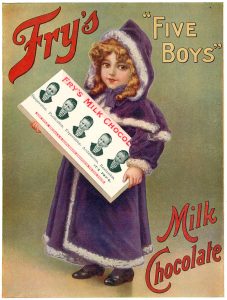What better way to celebrate Valentine's Day than with a box of chocolates, opens a new window?
Though Valentine's Day can be traced back to St. Valentine in the 5th century, opens a new window, it's ties to chocolate, opens a new window are relatively recent. Europeans were first introduced to chocolate by the Aztec Indians, who served it as a beverage and believed it had aphrodisiac powers. Love of chocolate spread across Europe, and in 1662 Henry Stubbe wrote The Natural History of Chocolate, opens a new window. Stubbe advocated for the beneficial qualities of the drink for one's romantic life and even introduced it to King Charles II. During this period, chocolate was still a delicacy most people could not afford.
By the Victorian era, opens a new window, Valentine's Day had become widely celebrated and cupid-bedecked cards and gifts abounded. In 1847 British chocolate maker J.S. Fry & Sons produced the first chocolate bar, meant for eating instead of drinking. The bar combined cacao powder, sugar, and cacao butter to create a moldable paste. A few years later the company began selling chocolates filled with flavored centers. However, it was Richard Cadbury who would introduce "Fancy Boxes" of chocolates in 1861. Inside, under a heavily decorated lid, assorted bonbons filled with marzipan, chocolate-flavored ganache and fruity crèmes nestled in lace doilies. In 1868 Cadbury, opens a new window made the first box in the shape of a heart for Valentine's Day. The boxes were prized by Victorians who would store love letters, lockets of hair, and other mementos in the empty boxes.
This love of chocolate has continued to grow. According to the National Confectioner's Association, opens a new window, 90% of Americans will purchase chocolate for a loved one this Valentine's Day.
This February cuddle up with a box of chocolates full of murder.




Add a comment to: Getting Cozy: Chocolate-Covered Murder